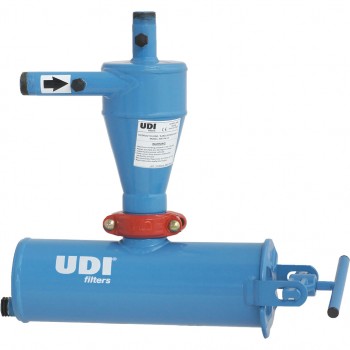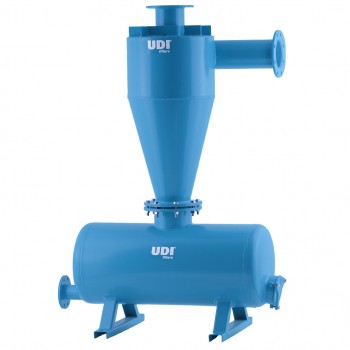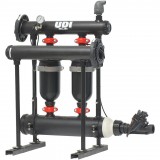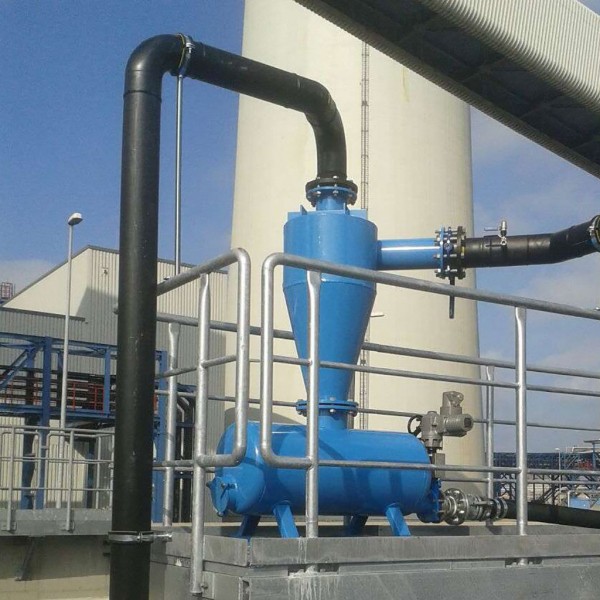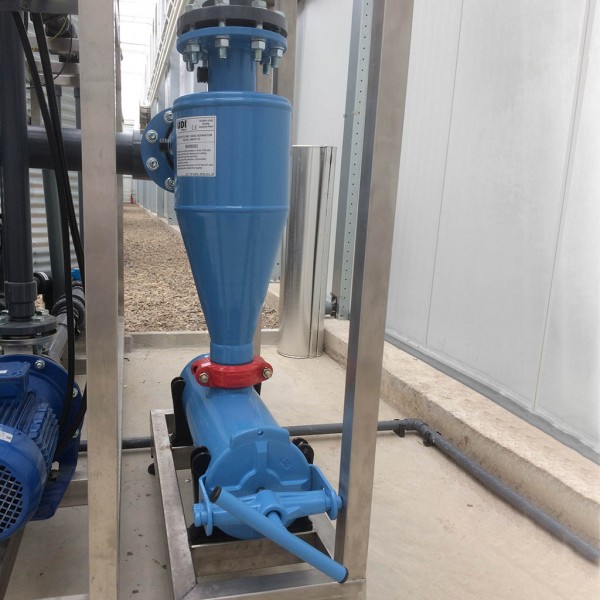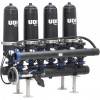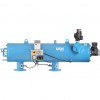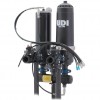-
The UDI Galileo L automatic disc filter is composed of several G.K. filters whose filter element consists of plastic discs compressed on a variable holder. This unique flushing mechanism opens up the filter element during the flushing cycle...
-
The UDI 6Matic is the latest development in automatic self-cleaning screen filters.
The filter offers an efficient solution for filtering water with fluctuating levels of dirt and varying flow rates.... -
The UDI Galileo L Air Assist automatic disc filter is composed of several G.K. filters whose filter element consists of plastic discs compressed on a variable holder. This unique flushing mechanism opens up the filter element during the flushing cycle...
Cyclone filters
Advantages of cyclone filtration:
Using hydrocyclones, parts of dirt with a high specific gravity can be filtered out quite effectively. The liquid is admitted tangentially, which results in a centrifugal flow forcing the dirt parts towards the outer side of the filter. Thereupon the dirt is carried downwards to the collecting tank. The water thus freed from the heavy parts arrives at the centre of the spiral and leaves the filter at the top.
UDI cyclone filters:
The large diameter of UDI cyclone filters makes it possible to generate, at a low differential pressure, sufficient flow energy to adequately separate the heavy parts.
In view of the minimal loss of pressure, the filter can be included in-line in existing installations. Cyclone filters can be made of stainless steel and/or provided with an inlay (wearing surface, e.g. vulcanised rubber) upon request.
Coating:
In preparation for the coating, the filters are provided with a special layer of zinc phosphate.
This treatment ensures proper adhesion of the coating, and protects against rusting-through from the inside.
Subsequently, the polyester coating is applied electrostatically, both internally and externally, before being furnace-hardened. The entire process involves 7 steps, and results in a perfect coating with a thickness of approximately 120 microns.






